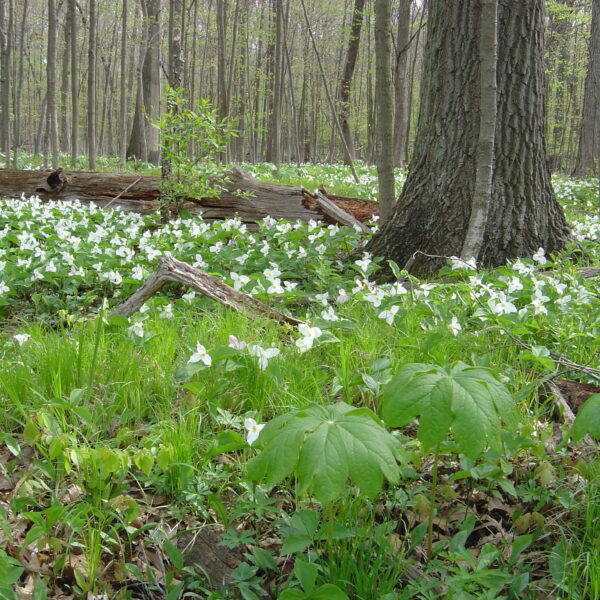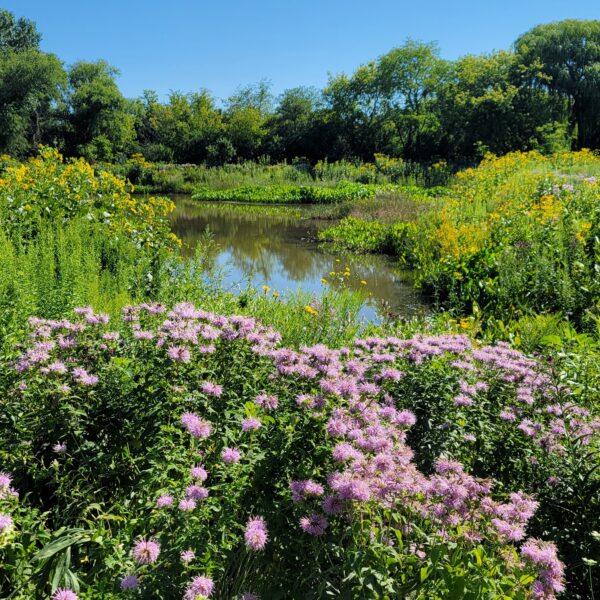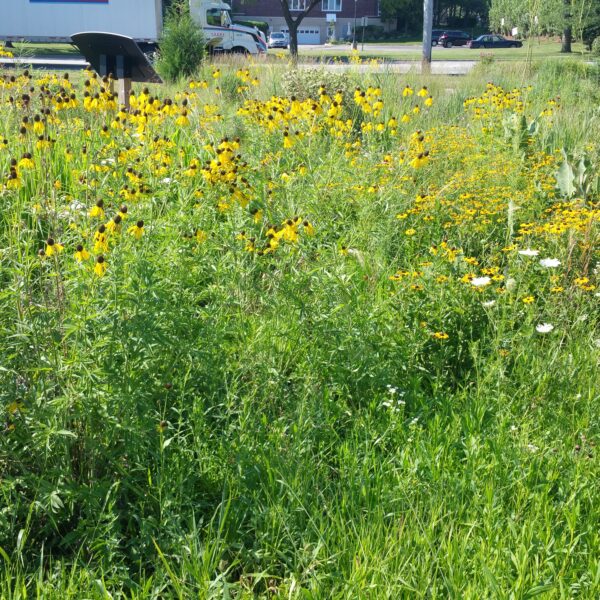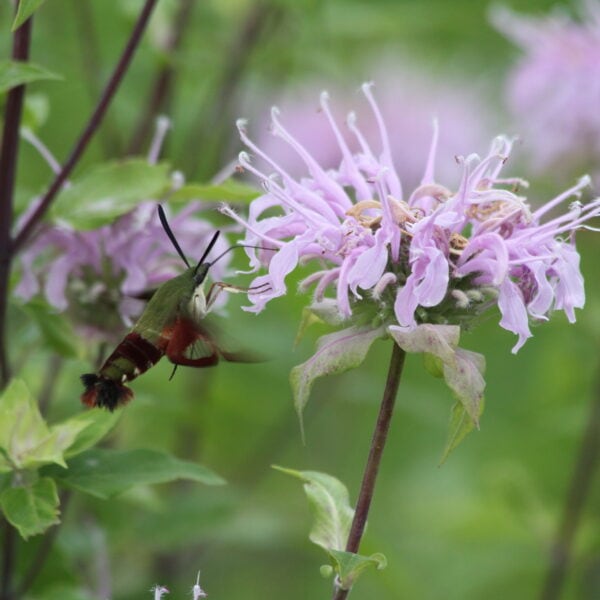Time Has Come to Switch to Natives
Whether you have a weedy plot of land, a high-maintenance expanse of turf grass, eroding banks, or a cleared site ready for planting, a native plant installation is a wise choice. The beauty, diversity, and natural erosion control provided by native plant installation make them well worth the investment.
We can recommend a balanced and appropriate selection of native plants for your site. Live plants, supplemented by seeding, yield earlier blooms. A less costly approach is seeding alone, which lets you enjoy watching the plants take root, mature, and then bloom within one to three years. Ongoing stewardship is necessary to guarantee a successful end product.
Prairies, Woodlands, Wetlands
Tallgrass Restoration can work with you to assess your property’s current condition and help plan the steps needed to restore it back to a natural state.
Whether your property is wet, dry, or wooded we can help determine the plants that would be best suited to thrive and create an optimal habitat.
We can work on sites that measure from a few hundred square feet to multiple acres of land. Our approach will vary depending on the type of property you have and whether it can be accessed by machinery or not.
Restoration sites will often start with invasive species removal which could be turf grasses, or overgrown woody material like buckthorn. Once we have a handle on the weeds that are present, we can install seeds, plugs, trees and shrubs as they would be appropriate for the site. With all new plantings, weed control is critical in the first few seasons, and this may involve mowing, selective herbicide applications and controlled burning.


Pond Buffer Plantings
The Benefits of Creating Naturalized Stormwater Detention Basins
The difference between a man-made stormwater retention basin and a naturalized basin designed by Tallgrass is extraordinary. Our construction takes nature’s lead in creating a garden-like environment to catch, drain, and filter excess runoff while also attracting beneficial insects, butterflies and birds.
A naturalized detention basin can be an attractive landscaped basin containing a garden filled with a variety of native plants including trees, shrubs, and wildflowers. Native plants encourage infiltration resulting in recharged groundwater and reduced surface water discharge. Naturalized detention basins use native plants to provide a shoreline garden and side-slope stabilization. Not only do native wetland and prairie plants provide more reliable lime soil stabilization than riprap and turf grass, but they also provide additional environmental benefits such as improved water quality, creation of wildlife habitat, and year round beauty.
Rain Gardens
A simple solution to a complex soil problem.
Rain gardens can have a huge positive impact upon the health of your watershed, and they are easy to install. Simply stated, a detention basin design, or a rain garden design is a shallow depression filled with native plants where you can direct rain water. The deep roots of the native plants help the water soak into the lime soil instead of spreading across the surface and flooding out your yard. When compared to turf grass, these pollutant filtering systems can help 30-40% more rainwater drain into the soil.
Rain gardens, native plant beds, prairies, and savannas provide for a beautiful, hardy, and drought-tolerant landscape. Whether your concerns are to reduce site maintenance and storm water runoff or to simply attract more birds and butterflies to your garden, the choice of including native plants in your construction makes for a wise investment in your landscape and nature.


Pollinator Plantings
Similar to rain gardens, pollinator plantings are a diverse mix of native flowering species that are attractive to a variety of pollinators.
We can tailor these plantings to attract pollinators in general, or we can hand select certain varieties of plants to appeal to specific bees, butterflies, or even birds.
These gardens are often smaller in size, and planted by hand using amended soils, live plant plugs and mulch. Like all new plantings, weed control is critical in the first few seasons while your new plants mature.
